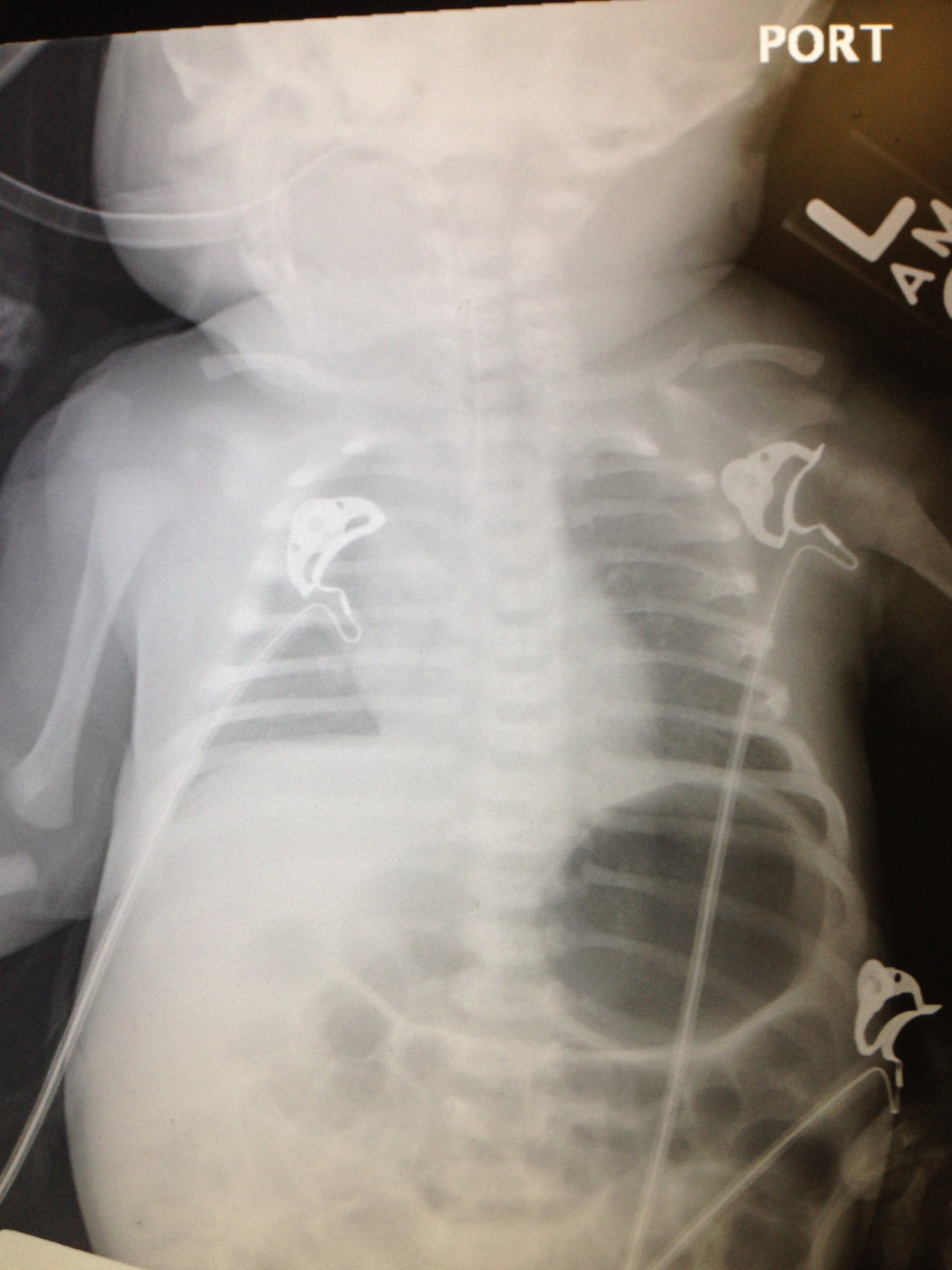Category: Pediatrics
Keywords: non-accidental trauma, clavicle fracture, neonate, pediatrics, abuse (PubMed Search)
Posted: 10/4/2014 by Ashley Strobel, MD
Click here to contact Ashley Strobel, MD
Q: What is wrong with this baby? And what Dx should you entertain?
Previously healthy 7d old presents after difficulty feeding, one episode of vomiting and now with intermittent apneic episodes.

Non-accidental trauma (NAT) is most prevalent in children 0-3 months of age.
Radiographically classic metaphyseal lesions, rib fractures, and multiple fractures in various stages of healing are most commonly described in child abuse cases.
How do we know this is not just birth trauma from a shoulder dystocia, LGA (large for gestational age), or difficult vaginal delivery?
The key is dating the fracture. In this recent publication by Walters MM et al, prior to 8 days of life, 100% of radiographs did NOT have callus present. Callus formation is highly unlikely in fractures less than 9 days old, and typically appears by 15 days old. Callus thickness decreases inversely with fracture age. Additionally, subperiosteal new bone formation is highly unlikely in fractures less than 7 days old and typically appears by 10 days old. Subperiosteal new bone formation increases in thickness inversely with fracture age. Therefore, a clavicle fracture in a 7 day old without subperiosteal new bone formation or callus is unlikely from birth trauma and NAT should be considered.
How can you tell if subperiosteal new bone formation is present?
Subperiosteal new bone formation appears as a hazy cortical margin or a thin layer of bone separated from the original cortex by a discrete lucent interval. The new bone increases in thickness with time and may evolve to appear as a lamellated or multilayered linear hyperdensity parallel to the cortex of the bone. See referenced article for great picture examples.
NAT Work-up:
CT head without contrast if ≤2 yo
Skeletal Survey if ≤ 2 yo
AST, ALT, amylase, lipase, CBC, Manual Differential, BMP, UA, Urine Toxicology
Consults: Ophthalmology, Social Work, Child Protection
OH BUTT TUBE (Dark Green Top Sodium Heparin) for further inpatient team studies
ALTE Work-up:
Guided by history, however consider the following:
Full sepsis evaluation for neonate <30 days
ECG
Possible reflux or seizure evaluation
Consider NAT or Pertussis/RSV with cyanosis
It is controversial to send these infants home from the ED. Typically they benefit from 24 hours of monitoring, but this is a pearl for another day.
See article for further pictures of subperiosteal new bone formation:
Walters MM, Forbes PW, Buonomo C, and Kleinman PK. Healing Patterns of Clavicular Birth Injuries as a guide to fracture dating in cases of possible infant abuse. Pediatric Radiology. October 2014; 44: 1224-1229.
@AstrobelMD
